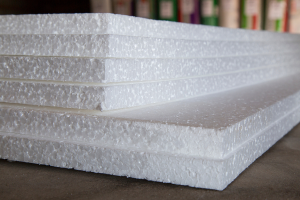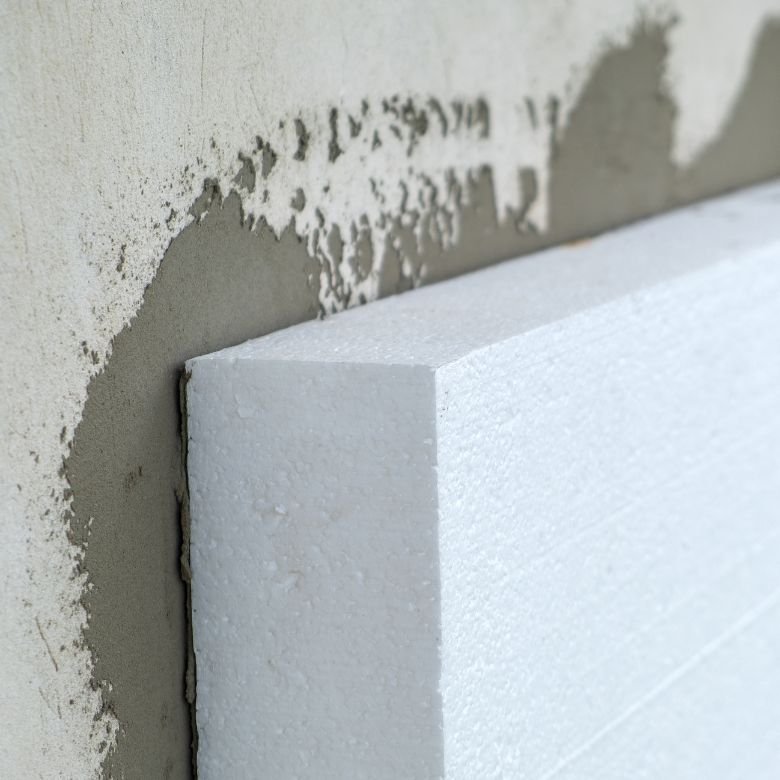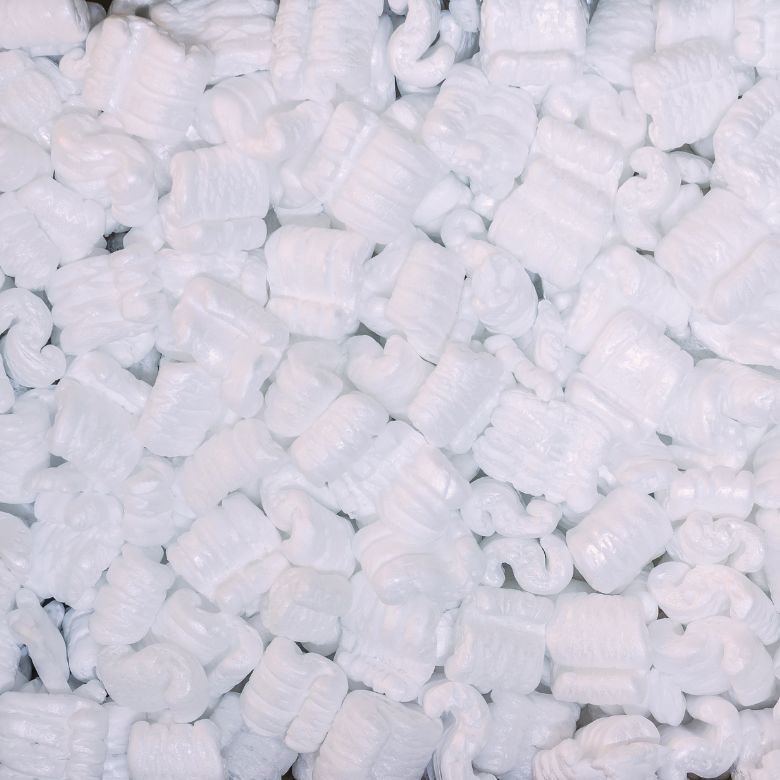The technologies available today enable us to perform many tasks quickly, easily and effectively. This applies to, e.g., the construction industry. However, despite the invention and popularisation of products such as PUR foams, we still use traditional materials such as polystyrene foam. When is it worth using it, which type to choose and how much should you be prepared to pay for it? In this article, we answer all your questions!

Get to know the application of polystyrene foam.
Expanded polystyrene foam, i.e. polystyrene foam, has been serving humans for almost a century. The interwar period was crucial for inventions in the field of plastics, but despite the dynamic development of chemistry and the discovery of further properties of polystyrene, no one managed to turn it into a functional insulating material. It was invented by a German chemist, Fritz Stastny, in the first half of the 20th century. He was motivated by the work he had started in his laboratory before the outbreak of the Second World War, and the increase in demand for building materials due to the wartime devastation.
Polystyrene foam for foundations, which we know today, initially played a different role. It was primarily used to make small packages. However, its thermal insulation properties meant that the material was quickly used in construction. The secret of the material lies in the method of obtaining it: polystyrene must be foamed, which means that the finished product consists mostly of air, which is, in turn, an excellent thermal insulator.
From the very beginning, polystyrene foam was characterised primarily by:
- resistance to moisture,
- lightness,
- ease of processing,
- insulating and shock-absorbing properties,
- relatively low price.
Over time, polystyrene foam for the insulation of houses and industrial buildings gained new properties. Continuous research and work by chemists have made it possible to make the material fireproof and much more durable. Today, it is used not only in construction but also in transport (as protection material), art and decoration. Disposable tableware is also made of polystyrene foam.
Types of polystyrene foam
Insulating a house with polystyrene foam and PIR panels is a very popular solution in the construction industry. However, to take full advantage of the properties of polystyrene foam and ensure proper thermal insulation of the building, it is worth getting to know the types of that material. The latest technologies make it possible to obtain polystyrene foam of various density. If it is high, the material is hard. Such is load-resistant polystyrene for foundations (XPS). Low-density expanded polystyrene (EPS), in turn, can be easily moulded into various shapes, therefore it is ideal for decoration.
Polystyrene foam with different properties is used in the construction industry, but higher density generally means better thermal insulation properties. It is worth bearing in mind that there are optimum specification standards for polystyrene. Both lower and higher values than recommended can negatively affect its use.
There are three types of polystyrene foam on the market:
- facade – in the form of universal white boards, it is used to insulate external walls and has an optimum thermal conductivity coefficient,
- underlay – if you’re wondering which polystyrene foam to choose for your floor, that type of material will work well, as it is resistant to loads,
- passive (graphite) – it is characterised by the best thermal insulation properties and it is used in energy-saving construction.
Another method of classifying that material is considering the way in which it is manufactured. In this case, the already mentioned types of polystyrene foam are distinguished:
- expanded polystyrene (EPS) – soft, susceptible to deformation,
- extruded polystyrene (XPS) – hard, resistant to damage, durable.
However, individual manufacturers may also use different nomenclature. Commonly used terms include elastic polystyrene foam, floor, foundation, ceiling and acoustic polystyrene foam.

When to insulate your house with polystyrene foam?
For manufacturers, builders and designers, thermal insulation materials play a key role in construction – how to insulate the roof, walls and foundations? When will polystyrene foam for house insulation be the best choice? Just like any other building material, it has its advantages and disadvantages. Let’s start with the advantages:
- low price,
- lightness,
- tightness,
- moisture resistance,
- diversity,
- easy installation of polystyrene boards.
Its advantage is also the fact that it does not lose the above-mentioned properties over time.
IMPORTANT! Modern technologies with the purpose of energy efficiency and sustainable production, supported by the PCC Group, enable increasingly effective recycling, and polystyrene foam is described as posing no threat to the environment.
The disadvantages of polystyrene foam are:
- susceptibility to the harmful effects of extreme temperatures,
- low resistance to chemical damage,
- limited adhesion – in some spaces, the application of polystyrene foam may not be possible, in which case PUR foam is used – see: spray insulation.
There is also another issue related to the use of polystyrene foam. It is not recommended for installation on your own. It is better to leave working with that material to professionals. Otherwise, we risk incorrect installation of the boards.
Polystyrene foam for house insulation will therefore be a good choice for people looking for cheap and proven solutions. If you are wondering when to insulate your house with polystyrene foam, please note that experts recommend the performance of renovation works in summer (but not in extreme heat) or in early autumn, when the weather is relatively stable.
Which polystyrene foam to you choose for house insulation?
Let’s start by saying that the work performed with the use of the material in question must be done in the right order. Therefore, the first step is to choose polystyrene foam for the foundations. Adequate thermal insulation of the base of the building will not only allow us to keep the heat inside but will also prevent visible cracks on the walls. Later, we can consider which polystyrene foam to choose for the facade.
What are the benefits of foundation insulation and what materials should be used? XPS polystyrene with a low thermal conductivity coefficient will work well in that case, due to:
- high level of thermal insulation,
- ability to reduce impact sounds,
- load resistance.
Remember that solid foundations will ensure tightness as well as thermal and acoustic insulation of the whole building.
What kind of polystyrene foam for the floor? In this case, the EPS type will work better. The specific product should be matched to the preferred thickness of the insulating layer and the dimensions of the room.

How to calculate the amount of polystyrene foam you need?
Fortunately, there is no need to worry about that aspect as the formula is very simple. To calculate the amount of polystyrene foam, follow the steps below.
- Measure one of the walls in the room.
- Multiply its height by its length to get the surface area value in square metres.
- Multiply the area of the wall by the thickness of the chosen polystyrene foam. You will get the volume in cubic metres.
IMPORTANT! Perform the above steps for each wall separately. Remember to include windows and doors!
Traditional dimensions of polystyrene foam
If you are interested in buying polystyrene foam, you need to know that manufacturers usually offer polystyrene boards with dimensions of 50 cm x 100 cm. For many people, however, the thickness of the material is crucial. It can be as little as 1 cm but can also reach over 1 metre! That’s a big range, isn’t it? Which type we choose depends on our individual needs. The most often ordered and produced polystyrene boards are 10 cm, 15 cm or 20 cm thick. However, some people opt for non-standard solutions and buy two 6 cm or 8 cm thick boards to gain a few extra centimetres of insulation layer. If in doubt, consult a building professional or the manufacturer.
The price of polystyrene foam – is it an expensive product?
The cost of insulating 1 m2 with polystyrene foam is relatively low. It is the cheapest thermal insulation material available on the market. Depending on the chosen thickness of polystyrene foam, its type and manufacturer, the current price is usually between PLN 50 and PLN 150 (note that prices often refer to cubic metres, not square metres). To this, the work of professionals and transport of the material must be added.
However, estimating the price of polystyrene foam is not an easy task. In recent years, it has risen noticeably, as have the prices of other building materials. Although the year 2023 brought a temporary stabilisation and price decrease in the market in question compared to the previous period, it is worth following the changes and not delaying construction or renovation.
- https://www.fao.org/3/y5013e/y5013e08.htm
- https://plasticseurope.org/plastics-explained/a-large-family/expanded-polystyrene/
- https://kb.pl/elewacje-i-ocieplenie/styropian/ceny-styropianu-roznego-typu-zobacz-ile-zaplacisz-za-styropian/
- Chandra, M., Kohn, C., Pawlitz, J., & Powell, G. (2016). Real Cost of Styrofoam. Presented to St. Louis Earth Day, Saint Louis University
